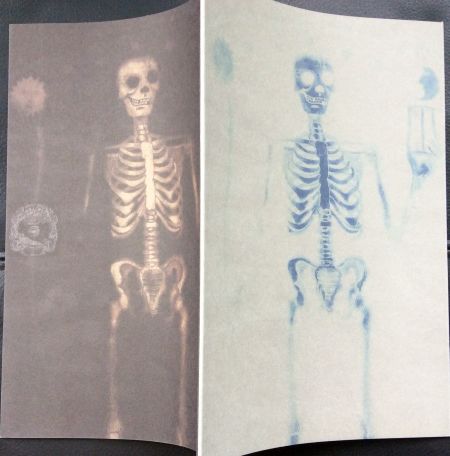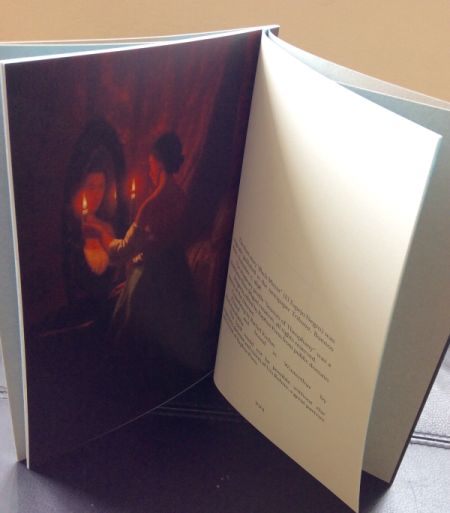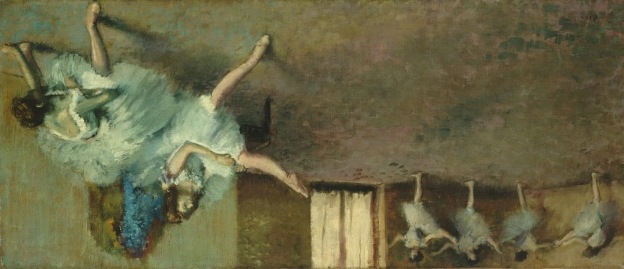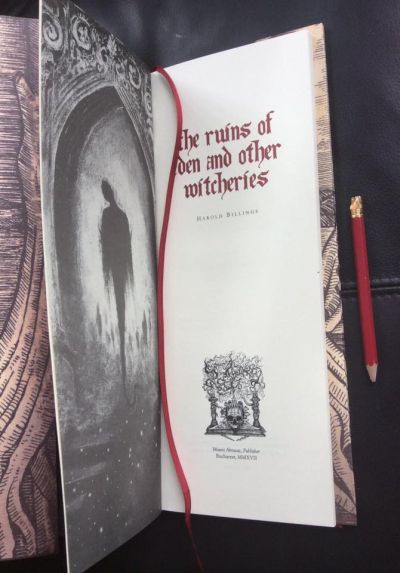
www.nemonymous.com
Des Lewis - GESTALT REAL-TIME BOOK REVIEWS
A FEARLESS FAITH IN FICTION — THE PASSION OF THE READING MOMENT CRYSTALLISED — Empirical literary critiques from 2008 as based on purchased books.
Tuesday, August 29, 2017
Black Mirror – Leopoldo Lugones
Black Mirror – Leopoldo Lugones

Raphus Press, May 2017, Numbered: 17/55
With an imaginary profile by Alcebiades Diniz Miguel
I should start reviewing this in a few weeks and, when I do, my thoughts will appear in the comment stream below…
[My previous BLACK MIRROR as gestalt HERE.]

Lanterns of the Old NightIn "Alcebiades Diniz Miguel"
BOOKLOREIn "Alcebiades Diniz Miguel"
All Is Full Of Hell - A Panegyric for William BlakeIn "Adam S. Cantwell"
4 thoughts on “Black Mirror – Leopoldo Lugones”

Stylish, well-made, with pale blue fly-leaves plus around 25 pages, including six colour prints. Spoiler-sensitive credits and details as to the two ostensible items of material herein, as if the chapbook itself is dechapping me by reflecting my own mischievous critical intentions and neutralising them even as I write them, and having written them, I still can only write words as chameleons…- Cross-referenced today here with possible spoiler: https://dflewisreviews.wordpress.com/2017/08/21/the-ruins-of-eden-and-other-witcheries-harold-billings/#comment-10490
- Related Black Mirror and Truman Capote: https://dflewisreviews.wordpress.com/2015/09/10/music-for-chameleons/#comment-5378
- END
Thursday, August 24, 2017
HP Lovecraft
HPL is/ was execrable, provocative, with sometimes inspiring imagination, disarming hydromoronic fiction style, and he warned us about Trump with Azathoth and about Brexit with his own deep dark xenophobia.
Saturday, August 19, 2017
Haunted Worlds – Jeffrey Thomas
Haunted Worlds – Jeffrey Thomas

HIPPOCAMPUS PRESS 2017
My previous reviews of Jeffrey Thomas HERE and of this publisher HERE
When I real-time review this book, my thoughts will appear in the comment stream below…
Black Static #48In "Andrew Hook"
Interzone #263In "alexander marsh freed"
Bone Idle in the Charnel HouseIn "bone idle in the charnel house"
17 thoughts on “Haunted Worlds – Jeffrey Thomas”
Part One: Our World
.
CARRION
“, it was absolutely gray now, and nothing more . . . a washed-out anti-color,”
As those who read my reviews regularly will know, I am a believer in the synchronous power of preternatural literature. Something I seek: the ultimate gestalt. A serendipity, too, that I call hawling or dreamcatching. Earlier this morning, I finished reading and reviewing a book called Phantasm / Chimera here, and ‘Carrion’ would have fitted it beautifully, and in fact if it had been the last story in it, I would have been even more in my glory than I already was. An amazing link for me.
That seems a good omen for my reading this book as a whole. ‘Carrion’ is of a fifty-something man escaping to the countryside after his younger Filipino wife left him while living in the city. Here we follow the lines on the road as he travels to his dreary disk drive filing job, and this seem to fit both ends of that parameter? Another parameter is the development of the roadkill he sees every day on his drive and his self-conscious xenophilia of watching and fancying an Indian woman in the works canteen, whose own belly turns out to be increasing evidence of pregnancy. The roadkill and her. Another matching pair. His own perceptibly hair-trigger chrysalis of a body making a sort of spiky-accented ménage à trois? Haunting and disturbing.
I keep my powder dry. Slow-motion reading over next few weeks in eager but pent-up anticipation.- SPIDER GATES
“: sadness can make people appear poetic or wistful, when in reality what they’re feeling is pain.”
Like gates you can see as designer wagon wheels or with wavy spokes like spider legs, the gates of life, here the spoken spokes of a group of teenagers at this side of the wood’s edge, narrated by a 15 year old girl’s older self nearing middle age. Her younger autistic brother, 10 at the time. And others, a prettier girl called Beth with there being different sorts of crushes between girls as between girls and boys, all lightsomely adumbrated with ominous undercurrents of those gates somewhere in or beyond the woods. And haunting, still haunting, still hurting cross-visions of glimpsed whiteness as living innocence, animal or human. The at first seemingly rushed ending, seemingly crushed or ‘crashing off’ as an ending to the story is tellingly like fleeting life itself, where the finished past is the only hinterland to try grasping….
“…like a white stone in the flowing brook of time.” - FEEDING OBLIVION
“‘Are you my nephew?’
He wanted to apologize that he was not, but the Nigerian attendant was already pushing the woman’s wheelchair away.”
That is the sort of question I remember being asked by residents when visiting my elderly Mum in a care home. The nice xenophiliac attendants that populate such a place, but also the guilt one feels that she needs to be in such a place at all, one’s own fear of creeping dementia creeping out of the place’s residents and the place’s walls, the general angst that growing beyond middle age brings of becoming not only homeless and partner-less but also dead, dead and alone with those demented nightmares. This is a neat disturbing anecdote surrounding my own fears. Almost a catharsis for me. Almost, because I can’t tell yet.
The stories so far are prose-deliberate and non-experimental as a style, but with frequent moments of dark-poetic flair. Meanwhile, I appreciate the seething inchoateness sensed behind JT’s otherwise deliberation of story-telling. - MR. FAUN
“Sparafhudullahs?”
I am now pondering on what I said in the previous entry. I can now imagine that the homeless man in that previous story was arguably a sort of art installation – as he continues to be here, but now officially in an art gallery. And also, whether this is satire on modern art or not (I am unsure!), this story represents a parallel with the dichotomy I was addressing earlier about ‘experimental’ and ‘deliberate.’ That serendipity again.
Also this work has a very clever plot, and is clear and believable about the characters: the would-be woman artist (who works in the earlier care or nursing home?) and her horror story writing husband she calls Bobert. (She illustrates one of his books.)
And the ripe pungency of the derelict throughout the work, actually seems to come off the page. Or that seething inchoateness between the lines I noticed before?
And the final sentence is brilliant in the foregoing context. - November 1994: Fair of the Dog
March 1996: Purged of Dream
The titles of my stories as published in THE END journal edited by Jeffrey Thomas.
The meaning of the words ‘purged of dream’ makes me think of such catharsis as one of the themes in this book so far, particularly the next story…
THE LEFT-HAND POOL
“She was an African-American woman who worked in another department.”
Reverting to my obsession with synchronicity and serendipity in the preternaturalism of literature and the gestalt reviewing of literature, it is appropriate to point out that I happen to be concurrently reading and reviewing here a book by Sofia Samatar, an African-American woman, a book with ostensible themes derived from that fact of her own backstory.
This still provocatively resonating story is along the creative reciprocal xenophilia parameters of ‘Carrion’ earlier in this book, featuring a very strikingly written genius-loci of a wooded lake divided into two by a road, splitting it into two dissimilar pools, as named left-hand and right-hand pools. Tellingly, those two arbitrarily named bodies of water, named by the male sensitive loner of a protagonist on his regular way to work, are still named thus on his return journey from work. One pool is more ominous than the other. What he sees in one will haunt you. His backstory hunting with his father takes on an inscrutable cathartic resonance with an eventually fulfilled culmination of asking that nice woman at work for a date…- Note this publication entitled XENOPHILIA (1992) in which I had a story published: http://www.isfdb.org/cgi-bin/pl.cgi?602329
- Another cross-reference to this Samatar book here: https://elizabethbowensite.wordpress.com/sofia-samatar/#comment-866
- Incredibly, another later cross-reference today to the Samatar book here: https://elizabethbowensite.wordpress.com/sofia-samatar/#comment-867

riaH gnoL
“Mine is on the left, but hers was on the right.”
A girl looking after laser tag and the miniature golf of the fairground, sometimes filling in for other attractions, in story- or truth-telling to customers about another fairground girl, and vice versa, a face full-stop, a twin sister and the number of breasts following cancer, one such customer being a “maybe-Indian” woman.
A very clever story, including the mutual double negative obviousness of the would-be or maybe-twins’ names.
[Is JT’s trichotillomania the inverse equivalent to Samatar’s lanugo? And his ‘sisters’ equivalent to those in in her FALLOW?]- THE TOLL
“Things had started to look interesting tonight when an attractive Vietnamese woman in her thirties who was also playing poker began flirting with him,…”
Is it a coincidence that Nate is a shortening of Nanette from the previous story? Or a morphed form of the word for birth: natal, native, nativity? It all sort of prefigures something I predicted towards the end. A queuing of cars at a toll booth at two am in morning amid reddish exhaust foggy air, and an existential test that Nate is posed by what at first looked like a large deer…
An ending as a sort of reverse poker? Or a sort of ironic nativity? Something that we all have to decide at some future toll booth?
Makes of car we drive or tastes in music, notwithstanding. - SAIGON DEP LAM
“I’m sure it’s better to have Christmas in Vietnam.”
A striking, substantively literary story that should win literary awards if this were a just objective world, one with oblique implications bordering on vision and catharsis, telling of the aftermath, in our own distant perspective, of the past American involvement there, and a woman called Lan, getting on in age, is still riding a motorbike, half masked to hide scars from that war; she encounters other pure and mixed racial figures in the streets, when not working at her cousin’s restaurant. One such figure of particular telling mixed race to whom she wants to give, as a Christmas present, a non-abstract sign (almost an art installation?) of mixed-religion as well as mixed-race.
A genius loci of Saigon immaculate to my reading eyes. And in tune with the previous story’s ‘nativity’ that I explicitly noted, there are, in the late December city, very strange mixed xenophiliac symbols as Christmas shrines, as it were … with Vietnamese shepherds and wise kings, I reckon.
“As Lan stood there astride her bike, poised like a deer paralyzed by terror,…” - THE GREEN HANDS
“– perhaps Indian?”
Children (of the damned?) breaking into ‘big white smiles’.
Those of us who read horror stories regularly, particularly plague or zombie attack ones, as well as other hyper-imaginative genres, will, I predict, see their reading careers as being either pre-THE GREEN HANDS or post-THE GREEN HANDS. It is really that remarkable. Compelling and frightening, too. With shades of Le Chien Andalou.
And this thought of mine stems at least in part from what I said earlier about ‘deliberation’ and ‘experimentality’. And this book’s own skirmishes with modern art and other gallery installations. The workmanlike narrations re-ordered into art. Narrations become ready-mades – and perhaps other articles found around your house – conceptualised as Duchamp would conceptualise them.
“They were all interchangeable by now.”
—————–
Now that I am roughly halfway through this book, I confirm that I will not be reading any of the author’s Story Notes until I have read and reviewed all the stories themselves. Part Two: Other Worlds
.
THE GREEN HANDS
“, the sun seemed only to struggle up a short way into the sky before its great mass dragged it back down again into the same spot on the horizon.”
Mighty stuff, a ‘Run and Never stop‘ adventure fantasy also taking along the spirits of Edgar Rice Burroughs, HP Lovecraft and A. Merritt to give them a bonus ride in the after-life. I couldn’t put this down as I followed the book itself into a new dimension, both pre- and post-THE GREEN HANDS at once!
Thrilling and frightening, as well as visionary, with some stock ready-mades made into something quite new for the gallery of your reading mind. Farmer’s ‘to-your-scattered-bodies-go’ hanging in the sky like art installations with deadly grins, a morphed Moby Dick as s/m leviathan, carrion-parameters of Sun and Moon urged into some symbolic prayer of cupped hands, and much more. All transcended by that relentless, plain-spoken, unashamed onward chase. Amid a “deep loneliness”. An unforgettable plague of hands that takes WF Harvey beyond the power of a googol and Buñuel’s hands into a “swarm of ants cooperating to hoist large objects” “as if the painter’s blank canvas” “experimented by shutting them” “in some kind of experimental dance performance” upon layered leaves.- GOOD WILL TOWARD MEN
“…he was being towed upward on a taut black cable, as if being rescued.”
Or Good Will Hunting? This is a most striking, notable and not-to-be-ignored new-Blakean vision of Hell from the point of view of a human being put there for considered-to-be-evil but self-good intentions, here Andrews Nabors, and it starts with a gradual realisation by stages of drowning, with Torus hooks that need reading about in the original not here in a review, and they are for me the perfect expression of what I have called hawling towards a gestalt, which this story actually does. Hawling as Drowning in Hell, a vision akin to that sky-hanging in the Green Hands of ‘to-your-scattered-bodies-go’. Then this vision broadly (for the purpose of this hawling-review of it) is tied into a vision of a gestalt-awakening to the reasons for ending up here and actually BEING here, amid that earlier Vietnamese Christmas, where xenophilia now has to face, as one example, Christmas tree lights in the form of luminous beetles. In Hell for being a Hindu, as another example. And then the final gestalt as one scries into one’s reason for being in Hell with how that reason in human form has developed without you somewhere else in Hell. A prelude to something beyond even final conscious or unconscious gestalt. This is a significant work with a blend of unforgettable horrific images and thoughtful provocation. Even the provoking mixed beliefs or intentions of the actual mixed denizens themselves as movers and shakers of Hell. And even children there as the damned in tune with other themes in this book. “…two matching halves resembling the heads of human infants, twins conjoined at the mouth…” - THE TEMPLE OF UGGHIUTU
“A bit beyond the pit was another, another beyond that; and yet another, to the left.”
Pits of skeletons and skulls? Yes, we believe, following the heavy-duty hail that chased Nir and his goatherd into the Temple. For me, this is an inspiring and, yes, exciting Clark Ashton Smith tribute story for its own sake, a tribute without the over-heavy wordiness. A Temple whose legend is one of changing its geographical location. And words that shift their own tectonic plates towards being stored by Nir for telling to his children, should he outlive such words. 
Eight drawings, eight towers, eight numbered chapters…
DRAWING NO. 8
“This couldn’t be said of most of the races that had immigrated to the city of Paxton, which was Punktown’s official name,…”
Couldn’t be said of me that I am not a genuine reviewer of this book welcomed by the author rather than my being unwelcomed by him as a destroyer of it by means of collateral art-damage via artful angles and spirals and domes etc. — a destroyer of its ‘ready-made’ world of Punktown either (a) by my reproducing that art, almost forging it, stroke by stroke, with painstaking ‘deliberation’, complete with verbal sublimations or (b) by perpetrating one fell swoop of ‘experimentality’ with Degas ballet dancers being hawled upside down to the ceiling and their hair used like the paintbrushes of Jackson Pollock… I sense I was inveigled into a false sense of security by the previous story’s premature appearance of the name Ugghiutu. This is a work that is quite amazing in not only implicating the reader by traditional deliberation of dip pen and nib, but also by wild stabs of the avant garde, commissioning me as agent provocateur or double agent with triple bluffs, a ready-made I sense I knew already, but also someone or something that I knew was out to neutralise me before I did any more damage. They knew my credentials, I guess; Nhil (by his name in this story) knew I formed the nihilistic Zeroist Group in 1967 and other avant garde things as part of my backstory. And Famuu, a woman with another deadly giant grin, who invited me to be transformed into a version of this book’s earlier Mr. Faun. My blue turban, notwithstanding. On another level, a creditable intriguing story of ink, blood, art and other new or pre-fabricated worlds – harmless, I suggest, as long as you don’t let them get inside you.- REDEMPTION EXPRESS
“Just under that, in a different font: Funtown. At first she had thought it said Punktown. That was what they called this megalopolis that soared up all around her, built by Earth Colonists…”
Posy — scavenger and occupier of unfinished construction sites, and fighting against conniving redevelopers — as a character is probably the most xenophiliac in the book, as she soft-heartedly helps her “friendly ogre” as adopted father Aargh and the ‘snipe’ and even the head of the robot where its soul resides she assumes, and she lingers at the end of this story as beautiful coda to this book’s darkly smooth, if atonal, symphony; she awaits the Redemption Express, not for it just to shunt-collect deposits on soda bottles, I guess, but to redeem all of us in today’s troubled times. O, Punktown, your threat from Funtown or Trumpton is ominous – but also with the hope of Samatar’s Fallow and of any adopted reader like me as “gentle father” for Posy. Although an old man, I am not that similarly aged man who spat in her face. I am here to haunt this book. A book that hunts me as well as reciprocally haunts me back.
end of review
Subscribe to:
Posts (Atom)


Luxuriously upholstered book with quality materials, guessing about 13 inches by four, marker ribbon, all generously designed with artwork etc, stiff paper and even stiffer dust jacket, and illustrated endpapers.
THE RUINS OF EDEN
.Pages 7 – 12
Seems an intriguing sequel to this author’s genius loci of ‘Daughters of Lilith’ reviewed here, with Eden’s scion David tempted or teased into potential fatherhood by his mother with regard to bare-breasted women in the area and inveigled towards parting with the black stones he found from meteors, reminding me — gestalt-synchronously in my now seemingly endemic reviewing life — of the pieces of coal made into a black mirror that I just read about a few minutes ago here.
“One provided one fact, another a different fact, and others still others…”
I am utterly captivated by David’s quest to visit the ruins of Eden (and its Serpent?) helped by the satyr Magus map made in accordance with music scores…as a form of early writing. And the people he is recommended to be his companions on such a trip, one such companion being an enticing sounding woman based on the music of the satyr’s words via Billings’ own words.
Faced with known dangers like volcanos, David — with the brother and sister as his companions (Hamar and Iliana), companions on this quest for Eden — is also faced with “something that we do not know even exists” or “a problem that has not yet appeared.” And also faced with his need to resist Iliana’s innocent beauty when sleeping near her or when watching her wash. Faced, too, with each rapt reader like me watching the threesome’s adventure with a critical mind’s eye. Each character careful to leave no sign or spoor.
“Despite his being a satyr, it was clear that he had a great deal of empathy with the humans and had been extremely pleased in finding the three of them with whom to share not only his writing system…”
…and if this is Billings himself, no wonder there is such empathy!
I am inspired by this clean-cut adventure and their continued quest for Eden and its perhaps residual Serpent, encountering foes and personal accidents along the way.
One such accident to Iliana (and its post-care by David) delightfully causes his own passing ‘foe’ to be a faux pas of natural volition from his “maleness”…
Either
The perfect ending to this story with the threesome’s cautious resistance to sleep’s encroaching dreams near or within “the birthplace of our races.” Followed by the final sentence’s throwaway deadpan prospect of an even more perfect ending on top of the previous one!
Or
A doubt that those encroaching dreams were not from residual Eden’s idle or dying Serpent but from the actual imposed or plotted map of the Magus who is telling us about their story.
Whichever it is,
this doubt of ‘whichever’ creates another perfect ending layered upon my reading mind.
CHANTS FOR BROKEN GATES
“, the breaking of the physical gate to our most private parts –”
A tempting of nunnishly constrained temptress-wenches themselves, I guess, by dint of those oblique figures chanting nearer, a tempting chant caught in the words of this story. One such nunnish wench is tempted through the night towards a lake with “several handfuls of swans.” I felt tempted to join her, despite my own constrained desires. Other readers younger or less infirm than I am may find this story even more tempting, and thus more dangerous.
UNCLE HIRAM’S HOUSE
Akin to that final sentence of the Eden story, here an equally enticing ending, where love’s promise is about to be fulfilled, we hope and trust, with at least a lick of lust. But not before the “particulates” make the male narrator (neglectful keeper of his late Uncle Hiram’s house) wonder what he’s got his young female cousin into, “that I dragged you into such a situation”, into a most unusual haunted house, with even Uncle Hiram equally ‘dragged’ back and forth to and from his old home and death’s home in tiny bits? This will haunt me in a gestalt of such a bits for at least the rest of my life. Seriously.
THE EAR TRUMPET
“…who had owned a large plantation in the Old South before his great-grandparents and grandparents moved to East Texas.”
The perfect coda. The sound of history or of the story itself. As Ann, a hard-working interviewer for journalistic articles, tells me, her loving reader and maybe husband, of the ancient days and the ear trumpet that recorded it, a story told through several levels, to me, to you, and we finally realise that this book itself is perhaps equivalent to that ear trumpet, in our actual hands now. “A segment of sound kept repeating itself each time”, like that earlier chant.
“, just go with your stories.”
end